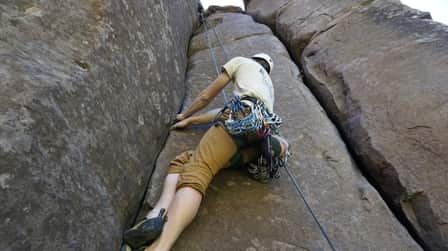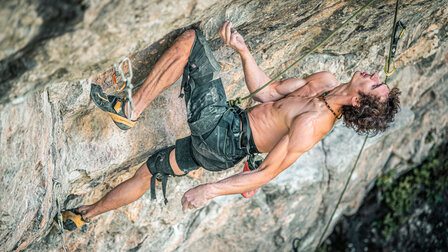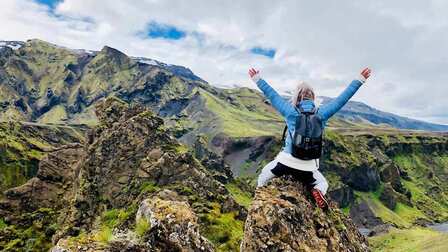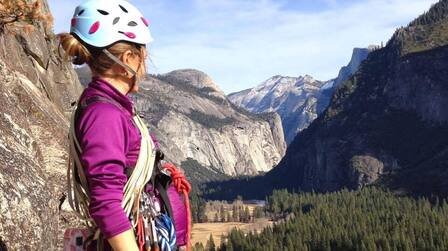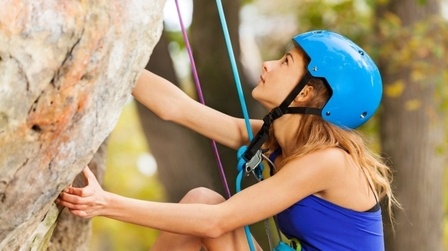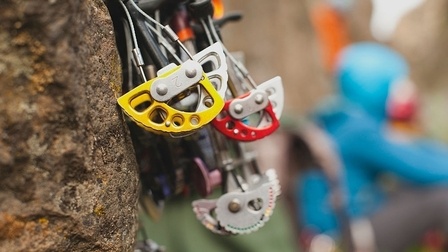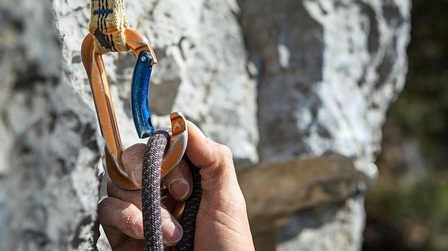Ice climbing on a winter day is a great experience for your holidays. However, to participate in this ice climbing activity, you need to prepare and plan carefully. Because you will hardly be able to see how cold it really is.
Here, we provide some tips for staying warm when ice climbing. Hopefully, with these tips, you will have great ice climbing sessions.
1. Bring a jacket "The more puffier, the better"
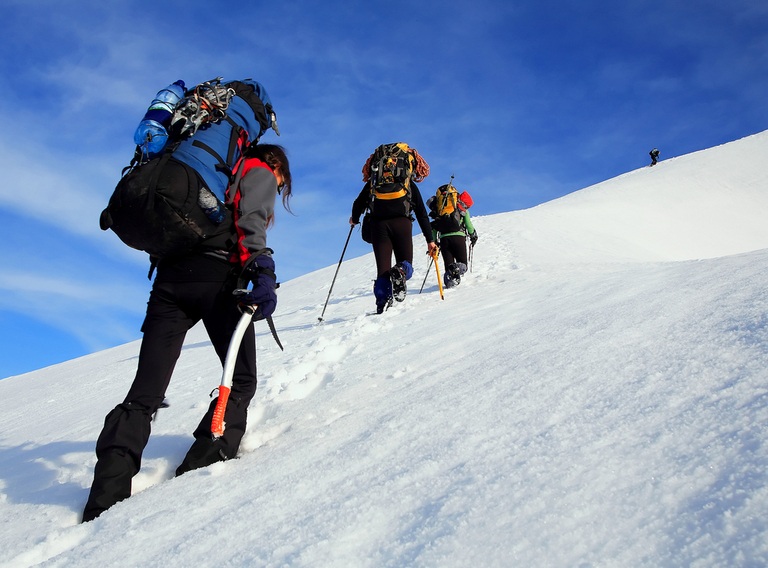
Ice climbing will be very cold. To best stay warm, the first thing you need to prepare is that you need to bring a large, fat belay jacket to wear when you join the ice climb.
It does not require too high a technology, new or even fashionable, beautiful. It is important that it is warm. Furthermore, the bigger it is, the better.
2. Prepare items for a break
During ice climbing, at certain times of the day, you may want to sit down to rest. There are a lot of well-designed camping chairs on the market today, but they are bulky and can get in the way of a crowded mountain climbing area. Instead, bring a foam seat pad or a small inflatable pad so you can sit on it. It will save a lot more time than you will find a place to rest.
3. Built a plan to avoid getting wet
The ice climbing sites you are climbing are most likely still spraying some liquid water. To avoid getting wet, cold, a waterproof outer layer will help you stay dry while climbing. You are one of those people who likes something breathable, you can opt to wear high quality, fast drying fabrics.
In any case, please keep the jacket away from water. Most jacket coatings will lose their thermal insulation properties when it gets wet.
4. Keep warm from the inside out

For mountain climbing, keeping warm is extremely important and essential. A fat life jacket is probably not enough. You need to prepare more hot tea. Have a few thermos to bring along some hot tea and broth. Being heated inside and out feels good to you.
5. Bring a lot of gloves

When climbing, you need to bring at least two pairs of gloves: thinner for the mountain and thicker for the rope. However, don't wear them at the same time. Ideally, keep a pair inside your jacket, where they'll stay warm by body temperature. Try to keep them from getting wet and dry.
6. Don't bring too much socks

The circulatory system plays a very important role in keeping your feet warm. So to keep your body warm when participating in the mountain climbing, wear a pair of good socks and create space for your legs for blood to circulate.
There are many climbers who are extremely nervous and bring too many socks. If you wear too many socks at once, it will bleed blood from your feet and make some toes terribly cold.
7. Boots

If you are a beginner in ice climbing, invest in suitable boots yourself. Boots made of leather, with holes or not really fit, will make you feel uncomfortable. A good pair of boots or high quality leather will keep you warm and dry. A good pair of boots will keep your toes from freezing.
8. Keep your head warm
When choosing an undercoat and a jacket to wear, consider hooded tops. The circulation of blood is extremely important. Therefore, keep your head and neck warm, prevent warm air from escaping through your shirt, and keep those ice drops from giving you a cold shock down your spine.
Alternatively, you can also bring a wool hat and scarf to keep you warm.
9. Vehicles

You go ice climbing for many days, you may have car problems (possibly covered with ice). Make sure your car is fitted with winter tires - suitable for snow travel. The car contains some food, a clean set for electronic devices such as cell phones, flashlights, .... And you should prepare a shaving pad for the window (avoid the case of ice and snow).
10. The Energy

Mountain climbing is a very energy consuming activity. This activity will burn a large amount of calories. Fully charged will help you stay warm and better climbing. In addition to giving you sustained energy, eating also helps keep you warm as you burn calories. Prepare dry, easy-to-carry, snackable foods on a regular basis, such as hard-boiled eggs, bacon or berries, and whole wheat bread and wheat. Eat a lot. When it is cold, you also feel less thirsty. It's important to stay hydrated all day long — cold weather can drastically dehydrate you. Drink water, make coffee and make sure you have enough calories in your body to burn.
11. Protective equipment

No matter what sports you take part in, it is extremely important and important to have body protection equipment. Don't forget to bring tape screws, helmets, belts, V-thread tools and screw clamps for your belts, ambulances. If you are doing ice climbing with others, carefully check what items you have with you and confirm with your partner what you are carrying.
12. Learn carefully about ice climbing skills
Ice climbing techniques are very different from rock climbing. For ice climbing, when you rotate your body, start with your elbow, then rotate your wrist. Keep your tools staggered, never put them side by side, as the tape breaks horizontally, in principle. Step up, keeping your feet apart and on the same level. Raise your feet and push with your feet. Learn ice climbing techniques, don't get hurt.
13. Find a mentor
You are new to ice climbing activities, or you have been involved for a while, finding yourself a mentor on the icy climbs is extremely necessary. It can be hard to find. But it is important.
The changing characteristics of snow, weather, clothing and equipment are best suited, so finding someone to learn is essential.
You can start your search by searching your local network, finding among the people you interacted with, or considering joining a climbing organization, to expand your network your net.
14. Assess avalanche terrain and other snow hazards
Knowledge of avalanches can be the biggest barrier to participating in winter trekking. Don't let it be a barrier and be proactive in your research.
15. Decide if you will go overnight
If you intend to overnight, remember to bring bags or emergency shelter. That is important. Prepare your tent with a design that can withstand the weight of snow, the strength of high mountain winds, or keep you warm in icy temperatures. If you stop playing on flat terrain, a double-walled tent is for you, helping to reduce condensation.
For ice climbing experiences dropping around 0 ° F in most ranges is normal, so bring a sleeping bag warm enough to be healthy. In addition to the warm fat life jacket, an insulated sleeping pad is essential - creating heat right on the snow bed.
16. End the process of ice climbing
After returning home, clean the bag and let the items dry, including the ropes. Wash and dry the socks and pull the lining from the boots and gloves (if applicable). Then enjoy a glass of juice or a glass of hot chocolate at the end of the day and plan for the next day.
Conclusion
Ice climbing is a fun, but also quite dangerous, experiential activity. You can enjoy the beautiful transformation that winter brings to the mountains.
Therefore, to participate in this activity, you need to carefully equip the necessary skills, learn the necessary tips when climbing ice. Hopefully, the top effective ways to keep warm for ice climbing we provide above will be of great help to you.


